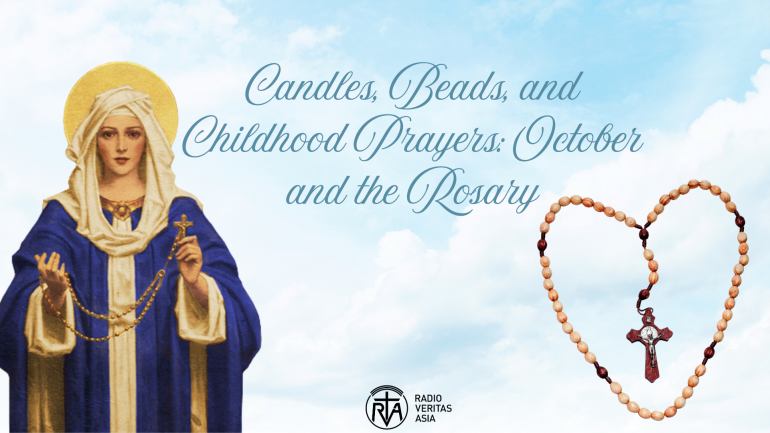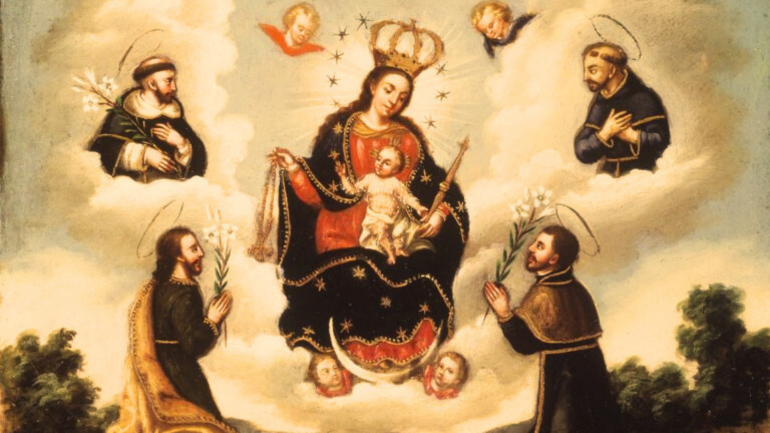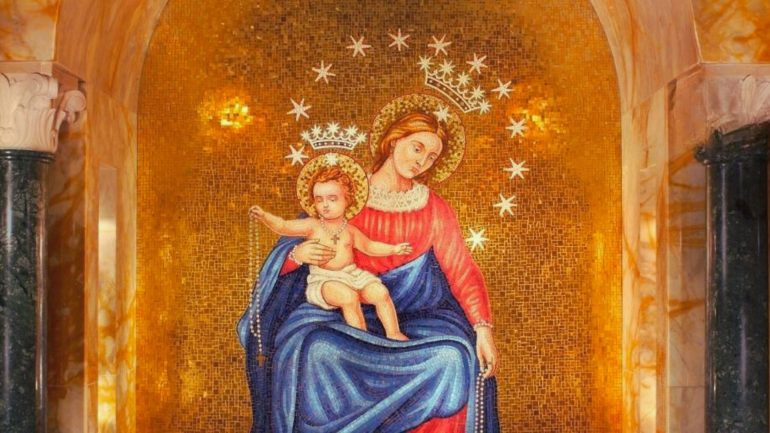Candles, Beads, and Childhood Prayers: October and the Rosary

As a little boy in my family home in a rubber plantation in Johor, 7 pm daily meant kneeling in the living room as the candles flickered before a small altar, hosting the Cross and several statues of saints, and of course, the Blessed Virgin Mary.
My late father led the prayers, his voice steady, while we children stumbled along, sometimes restless, sometimes sleepy, yet slowly shaped by the rhythm of those Hail Marys. Only later in life did I realise: the Rosary had been teaching me patience, faith, and the courage to entrust my life’s mysteries into God’s hands.
The Church has dedicated the month of October to the Holy Rosary. It is not only a month of prayers but also a season of remembrance, when Catholics across the world rediscover the humble beads that have guided countless saints, missionaries, and ordinary believers through wars, journeys, sickness, and moments of doubt. In Malaysia, Marian devotion is deeply embedded in family life, and basic ecclesial communities (BEC) continue to be a spiritual anchor, where the Rosary is recited.
From Lepanto to the Living Room
The Rosary’s origins stretch back to medieval Europe, but its worldwide spread owes much to the missionaries who carried it across oceans. Tradition recalls that St Dominic received the Rosary as a gift from the Blessed Virgin in the 13th century to combat heresies.
Centuries later, in 1571, the Christian naval victory at Lepanto was attributed to the faithful praying the Rosary. In gratitude, Pope Pius V instituted the feast of Our Lady of the Rosary on October 7, a date that blossomed into the month-long devotion we observe today.
By the time Catholicism reached Malacca in the 15th century with the Portuguese, the Rosary was already in full bloom in Europe. The missionaries taught the prayers not only as a Marian devotion but as a way for illiterate believers to meditate on Scripture.
Bead by bead, Hail Mary after Hail Mary, entire communities entered into the mysteries of Christ. In village chapels, rubber estates, and fishing villages across Malaya, the Rosary became a prayer of the people, accessible, portable, and deeply consoling.

A Malaysian Devotion
Even today, parish BEC groups in Malaysia host Rosary rallies in October. Marian shrines fill with pilgrims who carry rosaries entwined around their fingers. In Sarawak and Sabah, block Rosary groups still go house to house, gathering neighbours to pray before a simple statue of Our Lady. In urban Kuala Lumpur or Penang, Filipino workers, Indian Catholics, and Chinese parishioners unite on Saturdays to pray in churches before the beginning of sunset Mass - speaking a tapestry of languages, English, Tamil, Tagalog, Mandarin, and Bahasa Malaysia, yet all sharing the same faith.
The Rosary has also carried families through hardship. Older generations recall praying it during the Japanese Occupation, when food was scarce and fear was constant. Mothers clutched rosaries as they waited for children to return from school and husbands from work.
In Malaysia, where faiths weave a vibrant tapestry, prayer beads slip quietly through countless fingers. The Muslim’s tasbih, the Buddhist’s mala, the Hindu’s japamala, and the Catholic’s Rosary - each strand whispers its own rhythm of devotion, yet all echo the same yearning for the Eternal.
Mysteries that Shape a Life
At its heart, the Rosary is more than repetition. It is Scripture made prayer. Each decade carries us into a mystery of Christ’s life: the Joyful, the Sorrowful, the Glorious, and since 2002, the Luminous Mysteries added by St John Paul II.
Through Mary’s eyes, we contemplate the Incarnation, the Cross, and the Resurrection. For Malaysians, who live in a multi-religious society, this Marian devotion also offers a quiet witness. The Rosary does not shout; it whispers. Its rhythm fosters peace in families, patience in trials, and hope in uncertainty.
Many seminarians in College General, Penang, the oldest seminary in Asia, recall that the Rosary was part of their daily formation. Martyrs trained there, who later shed blood in Vietnam, Korea, and Thailand, carried the Rosary as their weapon of faith. In their hands, the beads became seeds of courage.
History records that when ordered to trample on the crucifix and deny his faith, St Philip Minh, a College General alumnus, refused to do so vehemently, clutching his Rosary. His companion, St Peter Quy, fasted, prayed, and constantly recited the Rosary while in prison. He also had in his hands a miniature statue of the Blessed Virgin Mary right till the end when the sword came down upon him.
Another College martyr, St Paul Loc, refused to renounce his faith while clutching his Rosary, whereas St John Hoan knelt to thank God for this great “test of faith” when the executioner raised his sword to strike him down, his Rosary in his hand. Another companion, St Peter Nguyen, recited the rosary defiantly, and his “Hail Marys” got obstinately louder and louder till the sword fell him in one savage blow. Such stories remind us that the Rosary is not a relic of the past but a living devotion, bridging generations.

Entrusting Our Mysteries
In an age of noise, the Rosary remains countercultural. Its slow rhythm forces us to pause. Its meditations ask us to gaze at Christ not through our own hurried lens, but through Mary’s pondering heart. October is therefore not just a month of tradition but of transformation. It invites us to take up the beads once more, in families, parishes, small groups, or alone, and to rediscover the quiet strength of entrusting our mysteries to God.
Even now, the memory of those childhood evenings in Johor glows softly within me. The candles may have flickered low and the prayers may have felt endless to a child’s restless heart, yet in that gentle rhythm, something eternal took root. The Rosary has become the thread that stitches my life together, binding me to faith, to family, and to the quiet, unfailing presence of God in every joy and every sorrow.
(Joseph Masilamany is a veteran Malaysian journalist and freelance writer with extensive experience in Catholic media. He contributes regularly to leading Catholic news agencies and platforms.)








